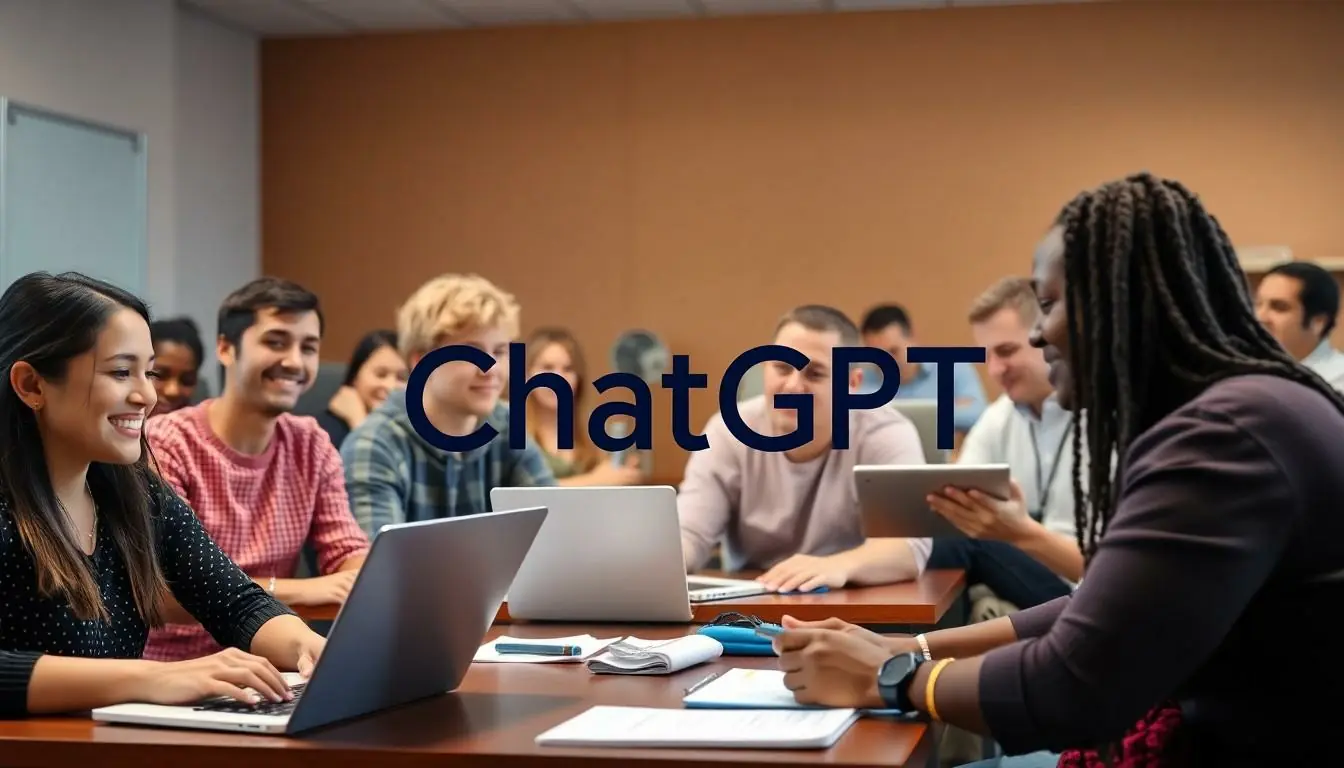In a world where technology evolves faster than a cat meme goes viral, the question of whether D2L can detect ChatGPT has become a hot topic. Students and educators alike are navigating the waters of AI-assisted learning, and it’s time to dive into the deep end. Can D2L spot a clever AI-generated response, or is it just another case of “who’s that sneaky little chatbot”?
Table of Contents
ToggleOverview of D2L
D2L, short for Desire2Learn, is a prominent learning management system (LMS) designed for educational institutions. Its focus lies in enhancing online learning experiences and streamlining course management.
What Is D2L?
D2L provides a comprehensive platform for creating, managing, and delivering online courses. It offers educators tools for developing engaging content and assessments. Institutions utilize its capabilities for tracking student progress and facilitating communication between instructors and learners. With a user-friendly interface, D2L attracts both users familiar with technology and those less experienced.
Features of D2L
D2L encompasses a diverse range of features. It includes robust analytics that schools employ to monitor student performance effectively. Communication tools, such as forums and messaging systems, enhance interaction among participants. Assessment capabilities allow instructors to create various types of quizzes and assignments. Moreover, integration options with third-party applications extend its functionalities, providing customized experiences tailored to specific educational needs.
Understanding ChatGPT

ChatGPT has emerged as a significant advancement in artificial intelligence, allowing users to engage in conversational exchanges with a sophisticated language model. This technology leverages extensive datasets to generate coherent, contextually relevant text.
What Is ChatGPT?
ChatGPT represents a cutting-edge language model created by OpenAI. It utilizes deep learning techniques to process and generate human-like text responses. Capable of understanding context, it engages in conversations, answers questions, and provides explanations on various topics. Users find it beneficial for generating content, offering creative writing assistance, and supporting language learning. Accessibility enables individuals and organizations to integrate ChatGPT into applications, enhancing user interaction and productivity.
Applications of ChatGPT in Education
In educational settings, ChatGPT serves multiple roles. It supports students by providing instant assistance with homework and projects. Educators leverage ChatGPT for brainstorming lesson ideas and generating customized resources. During language courses, it helps learners practice conversation skills. Furthermore, the model can generate practice quizzes and explain complex concepts in accessible language. Its adaptability to different teaching styles makes it a versatile tool that complements traditional methods, enriching the overall learning experience.
Detection Mechanisms
D2L employs various detection mechanisms to identify AI-generated content like that produced by ChatGPT. These mechanisms largely analyze writing patterns, stylistic consistencies, and linguistic structures within submitted assignments.
How Detection Works
Detection tools often utilize algorithms that study semantics and syntax. They compare student submissions against known datasets, looking for anomalies indicative of AI use. Machine learning models can identify repetitive phrases or overly structured text, flagging potentially generated content. In addition, patterns indicative of a lack of personal insight or critical thinking may signal AI assistance. Institutions aim for a comprehensive approach, aiming to balance technological advancements while maintaining academic integrity.
Limitations of Detection Tools
Detection tools face significant challenges in accurately identifying AI-generated responses. Variability in human writing makes it difficult to establish a clear baseline for comparison. Context sensitivity also presents obstacles; nuanced student expression can resemble AI output. False positives may occur if a student’s genuine voice aligns closely with AI characteristics. Constant updates in AI technology mean detection methods must evolve as well. Hence, staying ahead of rapid advancements in AI requires dedicated resources and ongoing development.
Can D2L Detect ChatGPT?
D2L faces ongoing challenges in detecting AI-generated content, particularly from ChatGPT. As AI technology evolves, educators and students closely examine its implications within online courses.
Current Capabilities of D2L
D2L’s detection mechanisms primarily focus on analyzing writing patterns and linguistic structures. Algorithms analyze submissions for stylistic consistency and semantic anomalies. Variability in human writing complicates accurate detections. With different writing styles, users can unintentionally trigger false positives. D2L continues to refine its technology and aims to adapt to emerging AI trends. Regular updates enhance its ability to maintain academic integrity while ensuring a fair learning environment.
User Experiences and Feedback
User experiences reveal a mix of insights regarding D2L’s effectiveness. Some students find it easy to bypass the detection systems with AI assistance. Educators express concerns over academic honesty, emphasizing the importance of reliable tools. Feedback indicates a desire for improved detection features to combat AI misuse. Many users advocate for transparency about how D2L identifies AI-generated content. Ongoing dialogue among users contributes to the platform’s enhancement, fostering a collaborative effort towards integrity in education.
Implications for Students and Educators
Students and educators face significant challenges regarding AI-generated content in educational settings. Detection capabilities play an essential role in maintaining academic standards.
Academic Integrity Concerns
Academic integrity concerns arise when students use AI tools like ChatGPT to complete assignments. Many educators worry that reliance on AI undermines the learning process. Cheating may increase as AI technology advances, with some students trying to bypass detection measures. Maintaining trust in academic environments hinges on transparency regarding D2L’s detection capabilities. Fostering an understanding of ethical use of AI will be critical. Educators must communicate the importance of original work in promoting genuine learning experiences.
Best Practices for Usage
Best practices for using AI tools in education exist to enhance learning without compromising integrity. Students should use AI as a supplement rather than a replacement for their efforts. Relying on ChatGPT for brainstorming or generating ideas can foster creativity. Teachers can encourage proper usage by integrating AI discussions into the curriculum. Building awareness about responsible AI usage will benefit both students and educators. Clear guidelines regarding acceptable use of AI tools can help create a fair academic environment.
As the landscape of education evolves with the integration of AI tools like ChatGPT D2L faces significant challenges in maintaining academic integrity. The effectiveness of its detection mechanisms will be crucial in addressing concerns around AI-generated content. Ongoing advancements in technology require D2L to continuously refine its systems to adapt to new developments in AI.
Educators and students alike must engage in open discussions about the ethical use of AI in learning environments. By promoting responsible AI usage and transparency regarding detection capabilities D2L can help foster a culture of integrity and creativity. Balancing the benefits of AI assistance with the need for genuine learning experiences will ultimately shape the future of education.







